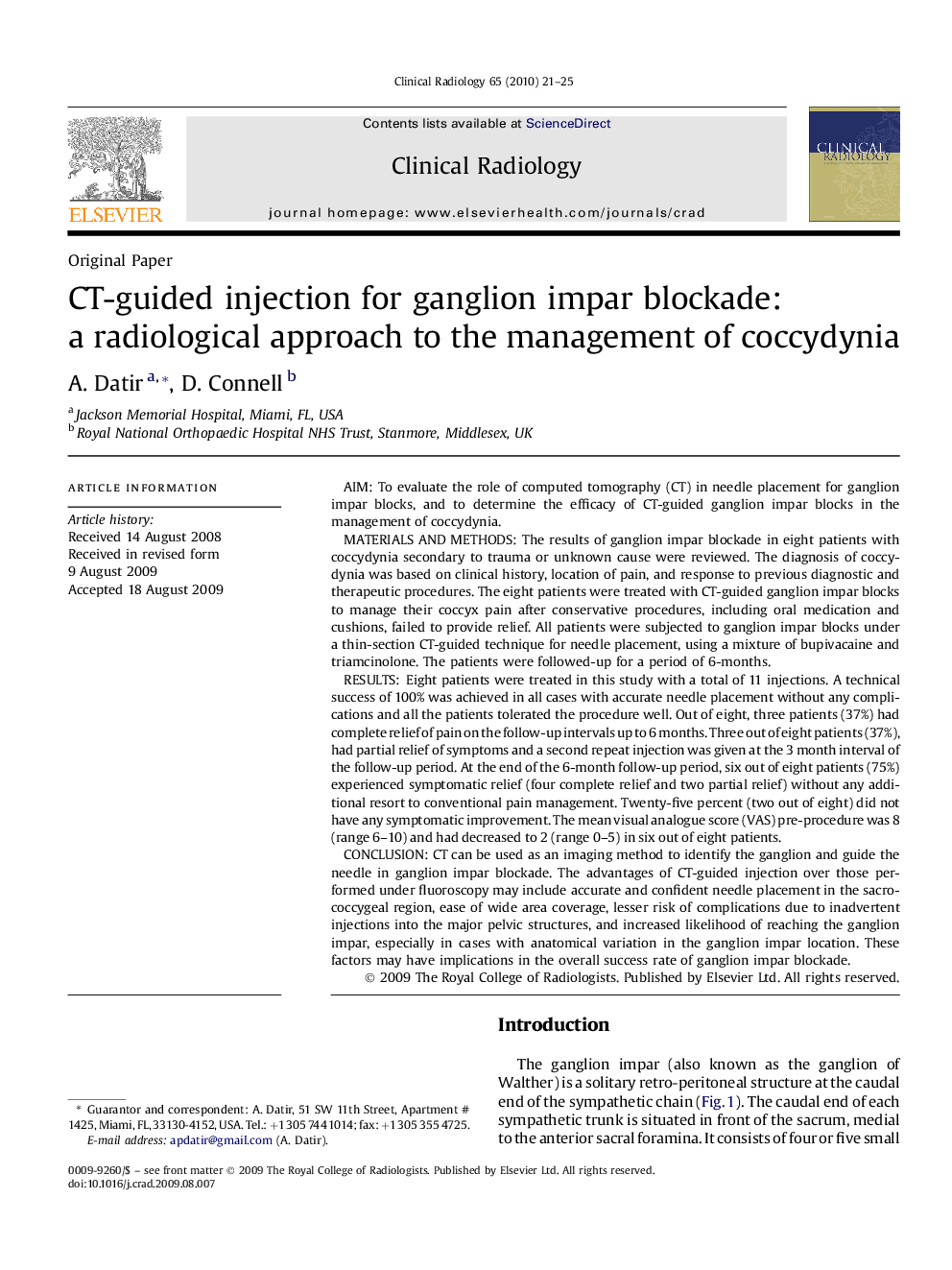| Article ID | Journal | Published Year | Pages | File Type |
|---|---|---|---|---|
| 3983855 | Clinical Radiology | 2010 | 5 Pages |
AimTo evaluate the role of computed tomography (CT) in needle placement for ganglion impar blocks, and to determine the efficacy of CT-guided ganglion impar blocks in the management of coccydynia.Materials and methodsThe results of ganglion impar blockade in eight patients with coccydynia secondary to trauma or unknown cause were reviewed. The diagnosis of coccydynia was based on clinical history, location of pain, and response to previous diagnostic and therapeutic procedures. The eight patients were treated with CT-guided ganglion impar blocks to manage their coccyx pain after conservative procedures, including oral medication and cushions, failed to provide relief. All patients were subjected to ganglion impar blocks under a thin-section CT-guided technique for needle placement, using a mixture of bupivacaine and triamcinolone. The patients were followed-up for a period of 6-months.ResultsEight patients were treated in this study with a total of 11 injections. A technical success of 100% was achieved in all cases with accurate needle placement without any complications and all the patients tolerated the procedure well. Out of eight, three patients (37%) had complete relief of pain on the follow-up intervals up to 6 months. Three out of eight patients (37%), had partial relief of symptoms and a second repeat injection was given at the 3 month interval of the follow-up period. At the end of the 6-month follow-up period, six out of eight patients (75%) experienced symptomatic relief (four complete relief and two partial relief) without any additional resort to conventional pain management. Twenty-five percent (two out of eight) did not have any symptomatic improvement. The mean visual analogue score (VAS) pre-procedure was 8 (range 6–10) and had decreased to 2 (range 0–5) in six out of eight patients.ConclusionCT can be used as an imaging method to identify the ganglion and guide the needle in ganglion impar blockade. The advantages of CT-guided injection over those performed under fluoroscopy may include accurate and confident needle placement in the sacro-coccygeal region, ease of wide area coverage, lesser risk of complications due to inadvertent injections into the major pelvic structures, and increased likelihood of reaching the ganglion impar, especially in cases with anatomical variation in the ganglion impar location. These factors may have implications in the overall success rate of ganglion impar blockade.
